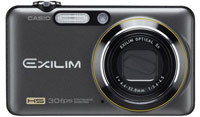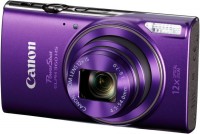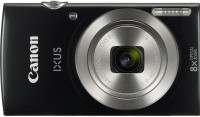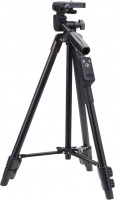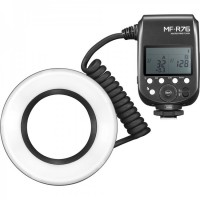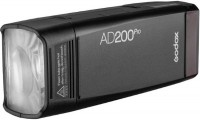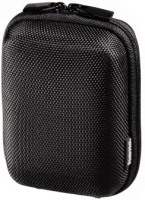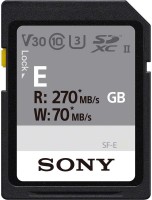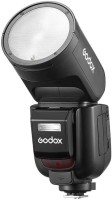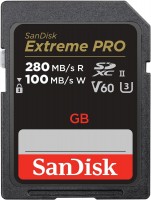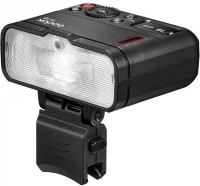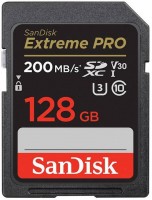Canon Digital IXUS 990 IS
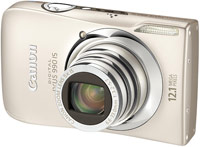 | Outdated Product $329.00 Sensor size: 1/2.3"; Effective MP number: 12; Focal length: 37 - 185; Optical zoom: 5; Image stabilization: optical; Macro shooting, from (cm): 2; Viewfinder: is absent; Continuous shooting (fps): 1; Screen ("): 3; Memory cards types: SD, SDHC; Power source: battery; Material: aluminium / plastic |
Canon Digital IXUS 990 IS
Panel:1/2.3", 12 MPix
Focal length:37 - 185 mm
Lens aperture:f/3.2 - f/5.7
Snapshot size:4000x3000 px
ISO range:80-1600
Burst shooting:1 fps
Screen:3 ''
All specifications
Specifications Digital IXUS 990 IS
|
| |||||||||||||||||||||||||||||||||||||||||||||||||||||||||||||||||||||||||||||||||||||||||||||||||||||||||||||||||||||||||||||||||
The information in the model description is for reference purposes.
Always clarify the specifications and configuration of the product with the online store manager before purchasing.
Catalog Canon 2025 - new arrivals, bestsellers, and the most relevant models Canon.
Always clarify the specifications and configuration of the product with the online store manager before purchasing.
Catalog Canon 2025 - new arrivals, bestsellers, and the most relevant models Canon.
Video reviews
Focus:
DIGIC4
The Canon DIGIC 4 image processor manages all key camera functions for maximum efficiency. Advanced image processing algorithms ensure the reproduction of the finest details and shades, as well as accurate white balance. The results of high processing speed are exceptional camera sensitivity, fast autofocus and long continuous shooting times. The DIGIC 4 processor provides advanced noise reduction technology, i-Contrast, face detection technology with autofocus compensation, autoexposure, exposure lock and white balance adjustment, and new scene recognition technology.
Scene Recognition Technology
In Smart Auto mode, Canon's Scene Detection technology analyzes the space in the frame, taking into account the brightness, contrast of the subject, focus distance and general background. After that, for each scene, the optimal settings are automatically selected from 18 possible options. A coloured icon appears on the LCD to indicate the recognized scene type and lighting conditions. This icon is not displayed in Easy mode; thus, the Easy mode remains as simple as possible and nothing distracts the user.
Thanks to the Smart Auto mode, the user can be sure that the camera will independently select all the necessary settings for optimal results - even when shooting at night, photographing moving or very close objects, backlit scenes, sunsets. Smart Auto mode increases dynamic range for brightly lit scenes to suppress unwanted light reflections, and reduces it for low-contrast subjects. In addition, when shooting the sky, the saturation of the blue colour is automatically adjusted.
Face Detection with AF Correction, AE, AE Lock, White Balance Adjustment, Blink Detection, Face Selection and FaceSelf-Timer
The first function automatically detects the faces of people in the frame, and then adjusts the focus, exposure, flash and white balance for optimal results. The technology is able to highlight the faces that the photographer wants to capture, and if the photo is a group, the 9-point AiAF is turned on. Thanks to the advantages of DIGIC 4, the system can now detect faces at an angle or in profile even faster and more accurately. The Blink Detection feature instantly warns the user about closed eyes in the picture (for example, if someone blinked). Immediately after shooting, a warning icon appears on the display - so you can immediately retake the picture. The FaceSelf-Timer makes it easy to take group photos by automatically releasing the shutter when a new face enters the frame.
i-Contrast
The Canon i-Contrast function can be used in both shooting and playback mode. It analyzes exposure, dynamic range and other characteristics, and then increases the amount of detail in dark areas without compromising well-exposed areas. The DIGIC 4 noise reduction function guarantees the minimum level of noise in the corrected areas.
Active display and improved user interface
Canon's Active Display feature, available on both models, uses an acceleration sensor to view images based on camera orientation and movement. You can easily scroll through images by simply moving the camera up or down, and when scrolling through images with the multi-function joystick, you can vary the speed at which images change by tilting the camera. The new user interface provides the ability to display tips and tricks on the screen, clearly explaining how to use certain settings and how they affect the image.
Zoom Blur and Creative Light Effect
The Digital IXUS 990 IS offers two new shooting modes. Zoom Blur changes the lens position from wide-angle to telephoto when the shutter is released, creating the effect of movement in the frame. Creative Light is used to convert light from surrounding sources - such as lamps or firework sparks - into various shapes, such as hearts and stars.
Optical Image Stabilizer
The 3-stage stabilization system improves the quality of photos in places with low light and when shooting at telephoto, when vibrations become more significant. Miniature gyro sensors detect camera shift caused by hand shake. These signals (4000 per second) are processed by an image stabilizer chip that distinguishes between hand-shake vibrations and intentional camera movement. They are then passed to the image stabilizer unit, which shifts lens elements accordingly to correct light rays and eliminate unwanted effects caused by shaking.
To improve accuracy and sensitivity, the moving elements of the lens are supported by miniature ceramic spheres. In addition to reducing vibrations, the use of ceramic spheres avoids the problems associated with metallic elements, such as increased thermal conductivity and magnetic properties.
Motion recognition technology
In Smart Auto mode, motion detection technology uses several methods to detect the movement of both the camera and the subject.
- 9-Point Intelligent AF (Face Detection Technology)
- 1-point AF (fixed centre or selected face)
- One-Shot AF and Servo AF
- Focus lock
- AF assist beam
- Selecting an AF point by size
- Flash modes:
- Auto
- Forced operation
- Flash off
- Low speed sync function
- Red-eye removal function
- Face Detection for Flash AE Correction
- Flash exposure lock
- Auto, P, Portrait, Night Scene, Kids & Pets, Indoor Scene, Sunset, Creative Light Effect, Fireworks, Long Exposure, Beach, Aquarium, Trees, Snow, ISO 3200, Digital Macro, Zoom Blur, Colour Accent Mode, Mode colour swap, panorama mode, video recording
- My Colours: Off, Vivid, Neutral, Sepia, Black & White, Positive Film, Lighten Skin Tone, Darken Skin Tone, Vivid Blue, Vivid Green, Vivid Red, Custom
- Shooting methods:
- Frame-by-frame
- Continuous (1 fps and until memory card is full)
- Self-timer (with a delay of 2 or 10 seconds)
- FaceSelf-timer (self-timer when a new object appears in the frame)
- Red-eye removal function
- Approximately 270 shots
- Approximately 360 minutes of playback
- English, German, French, Dutch, Danish, Finnish, Italian, Norwegian, Swedish, Spanish, Simplified Chinese, Chinese (Traditional), Japanese, Russian, Portuguese, Korean, Greek, Polish, Czech, Hungarian, Turkish, Thai, Arabic, Ukrainian, Romanian, Farsi
DIGIC4
The Canon DIGIC 4 image processor manages all key camera functions for maximum efficiency. Advanced image processing algorithms ensure the reproduction of the finest details and shades, as well as accurate white balance. The results of high processing speed are exceptional camera sensitivity, fast autofocus and long continuous shooting times. The DIGIC 4 processor provides advanced noise reduction technology, i-Contrast, face detection technology with autofocus compensation, autoexposure, exposure lock and white balance adjustment, and new scene recognition technology.
Scene Recognition Technology
In Smart Auto mode, Canon's Scene Detection technology analyzes the space in the frame, taking into account the brightness, contrast of the subject, focus distance and general background. After that, for each scene, the optimal settings are automatically selected from 18 possible options. A coloured icon appears on the LCD to indicate the recognized scene type and lighting conditions. This icon is not displayed in Easy mode; thus, the Easy mode remains as simple as possible and nothing distracts the user.
Thanks to the Smart Auto mode, the user can be sure that the camera will independently select all the necessary settings for optimal results - even when shooting at night, photographing moving or very close objects, backlit scenes, sunsets. Smart Auto mode increases dynamic range for brightly lit scenes to suppress unwanted light reflections, and reduces it for low-contrast subjects. In addition, when shooting the sky, the saturation of the blue colour is automatically adjusted.
Face Detection with AF Correction, AE, AE Lock, White Balance Adjustment, Blink Detection, Face Selection and FaceSelf-Timer
The first function automatically detects the faces of people in the frame, and then adjusts the focus, exposure, flash and white balance for optimal results. The technology is able to highlight the faces that the photographer wants to capture, and if the photo is a group, the 9-point AiAF is turned on. Thanks to the advantages of DIGIC 4, the system can now detect faces at an angle or in profile even faster and more accurately. The Blink Detection feature instantly warns the user about closed eyes in the picture (for example, if someone blinked). Immediately after shooting, a warning icon appears on the display - so you can immediately retake the picture. The FaceSelf-Timer makes it easy to take group photos by automatically releasing the shutter when a new face enters the frame.
i-Contrast
The Canon i-Contrast function can be used in both shooting and playback mode. It analyzes exposure, dynamic range and other characteristics, and then increases the amount of detail in dark areas without compromising well-exposed areas. The DIGIC 4 noise reduction function guarantees the minimum level of noise in the corrected areas.
Active display and improved user interface
Canon's Active Display feature, available on both models, uses an acceleration sensor to view images based on camera orientation and movement. You can easily scroll through images by simply moving the camera up or down, and when scrolling through images with the multi-function joystick, you can vary the speed at which images change by tilting the camera. The new user interface provides the ability to display tips and tricks on the screen, clearly explaining how to use certain settings and how they affect the image.
Zoom Blur and Creative Light Effect
The Digital IXUS 990 IS offers two new shooting modes. Zoom Blur changes the lens position from wide-angle to telephoto when the shutter is released, creating the effect of movement in the frame. Creative Light is used to convert light from surrounding sources - such as lamps or firework sparks - into various shapes, such as hearts and stars.
Optical Image Stabilizer
The 3-stage stabilization system improves the quality of photos in places with low light and when shooting at telephoto, when vibrations become more significant. Miniature gyro sensors detect camera shift caused by hand shake. These signals (4000 per second) are processed by an image stabilizer chip that distinguishes between hand-shake vibrations and intentional camera movement. They are then passed to the image stabilizer unit, which shifts lens elements accordingly to correct light rays and eliminate unwanted effects caused by shaking.
To improve accuracy and sensitivity, the moving elements of the lens are supported by miniature ceramic spheres. In addition to reducing vibrations, the use of ceramic spheres avoids the problems associated with metallic elements, such as increased thermal conductivity and magnetic properties.
Motion recognition technology
In Smart Auto mode, motion detection technology uses several methods to detect the movement of both the camera and the subject.
- Change in brightness - determined using the auto exposure function.
- Changing the image in the frame is determined by the pixel shift.
- Facial movement - detected using face recognition technology.
- Camera shake is determined by the image stabilization system.
- The ISO speed and shutter speed are then automatically adjusted to minimize image blur and produce the highest quality photographs.



